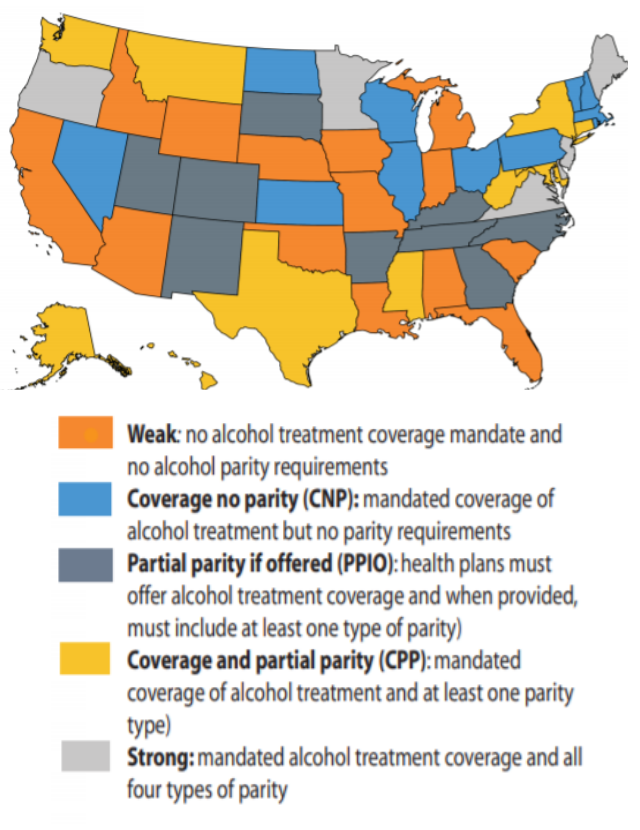Studying How State Policies Impact the Efficacy of Federal Parity Laws
-
Focus Areas
Alcohol, Tobacco, Drugs & Mental Health

In the United States, approximately 16 million people have an alcohol use disorder, and heavy drinking is a leading cause of preventable death. But accessing care for substance use and mental health problems can be more difficult than getting general medical or surgical care. Even people with health care insurance often face barriers to substance use treatment.
Parity laws at the state and federal level were designed to help ensure people can access the care they need regardless of whether they require medical, mental health, or substance use services.
A 2019 policy brief from the National Alcohol Research Center, housed at PHI’s Alcohol Research Group, looked at whether alcohol treatment admissions increased after federal parity was implemented, and whether this depended upon state laws. Researchers analyzed alcohol admissions data from SAMSHA’s Treatment Episode Data Set (TEDS-A) over a 15-year period from 1999 to 2013 and included two million alcohol-related treatment admissions per year across 45 states and the District of Columbia.
Overall, their findings showed that there was no significant change in US alcohol treatment rates after the 2008 Federal Mental Health Parity and Addiction Equity Act (MHPAEA). However, when including the local parity laws, states with coverage and partial parity (CPP) saw a significant increase in treatment admissions.
Work With Us
You change the world. We do the rest. Explore fiscal sponsorship at PHI.
Support Us
Together, we can accelerate our response to public health’s most critical issues.
Find Employment
Begin your career at the Public Health Institute.
